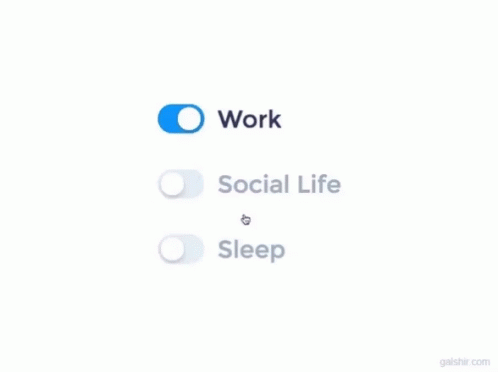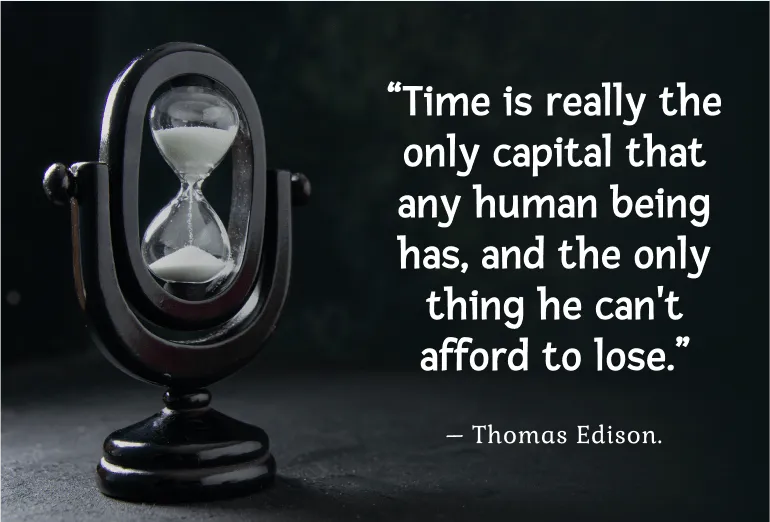Mastering Work-Life Balance: Achieving Success without Burning Out
Discover the key secrets to mastering work-life balance and achieving success without burning out in your personal and professional life.
Welcome to the world of work-life balance!
In this fast-paced and competitive era, it's all too easy to get caught up in the daily grind and lose sight of what truly matters. We often find ourselves juggling multiple roles - a dedicated employee, a loving partner, a caring friend, and perhaps even a dedicated parent.
It can be overwhelming, but fear not! Achieving success without burning out is absolutely possible with the right strategies and mindset.

In this article, we will explore the art of mastering work-life balance. We'll delve into the importance of finding equilibrium between your professional and personal life, as well as providing practical tips and techniques to help you achieve this elusive balance.
By implementing these strategies, you'll be able to navigate the challenges of both worlds while maintaining your well-being and overall happiness.
So, whether you're a professional looking to optimize your work-life balance or an aspiring entrepreneur seeking harmony between your personal and professional aspirations, this article is for you. Let's dive in and discover the secrets of achieving success without sacrificing your sanity or burning out!
Understanding Work-Life Balance
In today's fast-paced world, achieving a healthy work-life balance has become increasingly important. Finding the right balance between work and personal life can greatly contribute to our overall well-being and happiness. In this section, we will explore what work-life balance means, why it is crucial, and how to recognize signs of an imbalanced life.
Defining Work-Life Balance
Work-life balance refers to the equilibrium we strive to achieve between our professional commitments and personal responsibilities. It involves effectively managing our time and energy to ensure that neither our work nor personal life overpowers the other. It is about creating space for both career ambitions and personal fulfillment without neglecting either.
Importance of Work-Life Balance
Maintaining a healthy work-life balance has numerous benefits for our physical health, mental well-being, and overall satisfaction with life. Here are a few reasons why work-life balance is crucial:
- Reduced stress levels:
When we manage our time effectively and dedicate enough time to rest and leisure activities, we experience lower stress levels, which improves our overall quality of life. - Increased productivity:
Contrary to popular belief, working longer hours does not always equate to increased productivity. Taking breaks and prioritizing personal time actually helps recharge our energy levels and enhances productivity when we are at work. - Better physical health:
Maintaining work-life balance allows us to prioritize self-care, including exercise, healthy eating, and sufficient sleep. This, in turn, contributes to better physical health and reduces the risk of burnout.

Signs of an Imbalanced Life
It can sometimes be challenging to recognize when our work-life balance is out of alignment.
However, there are common signs that indicate an imbalanced life:
- Neglecting personal relationships: When work takes up most of our time and energy, it can lead to neglecting our personal relationships, causing strain and feelings of isolation.
- Constant exhaustion: Feeling constantly tired and lacking energy is a common sign of an imbalanced life. This can be caused by overworking or not prioritizing enough rest and relaxation.
- Lack of fulfillment: If we find ourselves feeling unfulfilled and dissatisfied despite professional success, it may be a sign that our personal life is being neglected.
- Feeling overwhelmed: When work becomes overwhelming and spills into our personal time, it can lead to increased stress, anxiety, and a sense of being constantly "on."
- Health problems: An imbalanced life can manifest in physical symptoms such as headaches, digestive issues, and weakened immune system due to chronic stress.
Recognizing these signs is the first step towards achieving a healthier work-life balance. In the next section, we will explore practical strategies for identifying your priorities and taking steps towards achieving the balance you desire.
Next up... Identifying your Priorities.
Identifying your Priorities
In today's busy world, it can often feel like there's never enough time to get everything done. Work responsibilities, personal commitments, and the desire for a fulfilling life can easily lead to a sense of overwhelm and burnout. That's why it's crucial to master the art of work-life balance.
By identifying your priorities and making intentional choices, you can achieve success without sacrificing your well-being. In this section, we will explore some strategies to help you identify your priorities and create a balanced life.
Reflecting on Personal Values
One of the first steps in identifying your priorities is to reflect on your personal values. What matters most to you? What are your core beliefs and principles?
Take some time to introspect and evaluate what truly brings you joy and fulfillment in life. This self-reflection will help you align your actions with your values and make choices that are in line with what is truly important to you.
Setting Goals and Priorities
Once you have a clear understanding of your values, it's important to set goals and priorities. Determine what you want to achieve in different areas of your life – career, relationships, health, personal growth, and leisure.
Write down your goals and break them down into smaller, actionable steps. By knowing your goals and priorities, you can make conscious decisions about where to focus your time and energy.
Recognizing Non-Negotiables
Another aspect of identifying your priorities is recognizing your non-negotiables—activities or commitments that you consider essential and are non-negotiable. These may be spending quality time with family, taking care of your health, or pursuing personal hobbies. By acknowledging these non-negotiables, you can ensure that they are given the time and attention they deserve.
Remember, everyone's priorities may be different, and it's important to honor and respect your own. By identifying your priorities and making intentional choices, you can create a more balanced and fulfilling life.
"Identifying your priorities is the first step towards achieving work-life balance. By aligning your actions with your values, setting goals, and recognizing non-negotiables, you can direct your time and energy towards what truly matters to you."
Creating Boundaries
In our fast-paced world, finding a balance between work and personal life can sometimes seem impossible. We're constantly bombarded with emails, deadlines, and obligations, making it difficult to switch off and enjoy our personal time.
However, creating boundaries is essential for maintaining a healthy work-life balance.
By setting clear boundaries, you can ensure that you have time for both work and personal life, without feeling overwhelmed or burnt out.
Separating Work and Personal Life
One of the first steps in creating boundaries is to separate your work and personal life as much as possible. Here are some ways to do that:
- Designate specific workspaces:
Having a dedicated workspace can help you mentally separate work from personal life. Whether it's a home office or a specific area in your living space, having a designated area for work can help you switch into work mode when needed, and then switch off when you're done. - Establish work hours:
Set clear working hours for yourself and stick to them as much as possible. This not only helps you create a routine, but also ensures that you're not constantly working or thinking about work during your personal time. - Create a work-free zone:
Designate certain areas in your home as "work-free zones". This could be your bedroom or living room, where you can relax and unwind without any work-related distractions.
Setting Clear Working Hours
When creating boundaries, it's important to set clear working hours that align with your personal needs and priorities. Here are some tips for setting clear working hours:
- Communicate your availability: Let your colleagues and clients know what your working hours are so they know when they can expect to reach you. This helps manage expectations and prevent work-related interruptions during your personal time.
- Stick to your schedule: Once you've established your working hours, try your best to stick to them. Avoid checking emails or working outside of those hours unless absolutely necessary. This allows you to have dedicated time for yourself and your loved ones.
Establishing Digital Detox Zones
In today's digital age, it can be difficult to disconnect from technology and constant connectivity. However, establishing digital detox zones can help you create boundaries and ensure you have time away from screens. Here's how you can establish digital detox zones:
- Turn off notifications: Disable notifications on your phone or computer during your personal time. This prevents constant distractions and allows you to focus on activities outside of work.
- Designate tech-free times: Set specific periods of time where you completely disconnect from technology. This could be during meals, before bed, or on weekends. Use this time to engage in activities that bring you joy and help you relax.
By creating boundaries, you can reclaim control over your time and achieve a healthier work-life balance. Setting boundaries not only benefits your personal well-being, but also improves your productivity and job satisfaction. So take the time to establish clear boundaries and enjoy the benefits of a balanced life!

Time Management Techniques
Time management is a crucial skill that goes hand in hand with achieving a healthy work-life balance. By effectively managing your time, you can increase productivity, reduce stress, and create more opportunities for leisure and relaxation. Here are some time management techniques that can help you master the art of work-life balance:
Prioritizing and Planning
One of the first steps in effective time management is identifying your priorities. Take some time to reflect on your goals and responsibilities both in your personal and professional life.
Once you have a clear understanding of what's important to you, you can prioritize your tasks accordingly. Make a to-do list, either on paper or using a digital tool, and rank your tasks in order of importance.
This will ensure that you focus on the most critical tasks first and allocate the appropriate amount of time to each.
Using the Time-Blocking Method
Time blocking is a technique that involves scheduling specific blocks of time for different tasks or activities.
Rather than working on tasks as they come up, you assign specific time slots for each activity, whether it's work-related or personal. This method helps you stay focused and disciplined, as you have allocated time for each task.
It also prevents multitasking, which can lead to decreased productivity. Use a calendar or a planner to allocate time blocks for different activities, and stick to the schedule as much as possible.
Avoiding Procrastination
Procrastination is a common time thief that can significantly impact your work-life balance. Instead of putting off tasks until the last minute, try to tackle them as soon as possible.
Break down larger tasks into smaller, actionable steps to make them feel more manageable. Set deadlines for yourself and hold yourself accountable.
If you find it challenging to stay motivated, try using productivity techniques such as the Pomodoro Technique, where you work for a set amount of time and then take short breaks.
Remember, effective time management is about finding what works best for you. Experiment with different techniques and tools to see what helps you stay organized, focused, and productive. By managing your time effectively, you can achieve a better work-life balance and create a more fulfilling and successful life.
As Brian Tracy said,
"Time management is really life management, personal management."
So take control of your time and take control of your life!
For more information on mastering work-life balance and achieving success without burning out, check out the rest of our article series. Stay tuned for more tips and strategies for a happy and fulfilling life!
Next section: Stress Management Strategies
Stress Management Strategies
Stress is an inevitable part of life, but how we manage it can greatly impact our overall well-being.
When it comes to work-life balance, stress can often be a major obstacle that prevents us from achieving harmony in our lives.
In this section, we will explore some effective stress management strategies that can help you maintain a healthy work-life balance.
Finding Stress Relief Activities
Engaging in activities that provide stress relief is essential for maintaining a balanced lifestyle. Here are some effective stress relief activities:
- Exercise:
Physical activity releases endorphins, which are known as the "feel-good" hormones. Incorporating exercise into your daily routine can help reduce stress and improve your overall mood. - Deep Breathing:
Deep breathing exercises can help calm the mind and relax the body. Take a few minutes each day to practice deep breathing and notice the difference it makes in your stress levels. - Meditation:
Meditation is a powerful tool for managing stress. It helps quiet the mind and promotes a sense of calmness and clarity. Find a quiet space and dedicate a few minutes each day to meditation.
I recommend the 21 Days of Abundance - Free Meditation Series by Deepak Chopra on Spotify.
Building a Support Network
Having a strong support network can significantly reduce stress levels. Surrounding yourself with supportive and positive individuals can provide a sense of belonging and emotional support. Here are some ways to build a support network:
- Connect with Friends and Family:
Cultivate and nurture deep relationships with friends and family members. Spend quality time with loved ones and engage in activities that bring you joy and relaxation. - Join Supportive Communities:
Seek out communities or groups that share similar interests or go through similar experiences. These communities can provide a safe space for sharing and receiving support. - Consider Professional Help:
If stress becomes overwhelming, seeking help from a therapist or counselor can provide valuable guidance and support. Don't hesitate to reach out when needed.
Practicing Mindfulness
Mindfulness is the practice of being fully present in the moment and non-judgmentally aware of your thoughts and feelings. Practicing mindfulness can help reduce stress by allowing you to focus on the present instead of worrying about the past or future. Here are some ways to incorporate mindfulness into your daily life:
- Mindful Eating:
Pay attention to the taste, texture, and smell of the food you eat. Slow down and appreciate each bite, savoring the experience. - Mindful Breathing:
Throughout the day, take a moment to focus on your breath. Notice the sensation of the air entering and leaving your body. This simple practice can help bring a sense of calmness and reduce stress. - Mindful Walking:
When going for a walk, pay attention to the sensation of your feet touching the ground, the movement of your body, and the environment around you. This can help bring a sense of grounding and relieve stress.
By incorporating stress management strategies into your daily routine, you can effectively reduce stress levels and achieve a healthier work-life balance. Remember, it's important to prioritize self-care and take steps to manage stress in order to enjoy a fulfilling and harmonious life.

Maintaining Physical and Mental Well-being
Maintaining physical and mental well-being is crucial for achieving work-life balance. When we prioritize our health and well-being, we can better cope with the demands of our professional and personal lives.
Here are some strategies to help you maintain a healthy balance:
Incorporating Exercise into Daily Routine
Regular exercise has numerous physical and mental health benefits. It can boost your mood, reduce stress, improve sleep quality, and increase your energy levels. Consider the following tips to incorporate exercise into your daily routine:
- Schedule exercise:
Treat exercise as an important appointment in your calendar. Block out time for physical activity and stick to it. - Find activities you enjoy:
Choose activities that you genuinely enjoy. It could be going for a run, practicing yoga, dancing, or playing a sport. When you enjoy the activity, you're more likely to stick with it. - Move throughout the day:
If you have a sedentary job, take mini breaks to stretch or walk around. Consider standing desks or taking the stairs instead of the elevator. - Create a home workout space:
If you struggle to find time to go to the gym, create a small workout space at home. It could be as simple as a yoga mat and some weights.
Getting Sufficient Sleep
A lack of sleep can negatively impact both your physical and mental well-being. It can lead to decreased productivity, increased stress levels, and a weakened immune system.
Here are some tips to ensure you get sufficient sleep:
- Establish a bedtime routine:
Develop a relaxing routine before bed to signal to your body that it's time to sleep. This could include activities like reading, taking a warm bath, or practicing meditation. - Create a sleep-friendly environment:
Make sure your bedroom is conducive to sleep. Keep the room cool, quiet, and dark. Invest in a comfortable mattress and pillows. - Stick to a consistent sleep schedule:
Try to go to bed and wake up at the same time every day, even on weekends. This helps regulate your body's internal clock and improves sleep quality. - Limit screen time before bed:
The blue light emitted by electronic devices can interfere with your sleep. Avoid using screens, such as smartphones or laptops, in the hour before bed.
If you’re not sleeping well (long & deep enough) at least 80% of the time, you’re not functioning nearly as well as you could be (& data suggest long term health is compromised too). What is long enough? How to get better at sleeping? Science & tools here: https://t.co/MQXzlVpTE6
— Andrew D. Huberman, Ph.D. (@hubermanlab) April 27, 2022
Taking Breaks and Vacations
It's important to take regular breaks and vacations to recharge and rejuvenate. Working non-stop without breaks can lead to burnout and decreased productivity.
Consider the following strategies:
- Take mini breaks during the day:
Schedule short breaks throughout your workday. Use this time to stretch, walk around, or engage in a relaxing activity to clear your mind. - Unplug during vacations:
When you take time off, make a conscious effort to disconnect from work-related activities. Set up an out-of-office message and resist the temptation to check emails or work-related tasks. - Plan regular vacations:
Whether it's a weekend getaway or a longer vacation, make it a priority to plan regular breaks from work. Use this time to relax, explore new places, and spend quality time with loved ones. - Engage in hobbies:
Outside of work, make time for activities you enjoy. Engage in hobbies or try out new ones. Hobbies provide a sense of fulfillment and can help reduce stress.
Remember, maintaining physical and mental well-being is an ongoing process. It requires consistency and effort.
By prioritizing your health, you'll be better equipped to manage the demands of both your personal and professional life. So take care of yourself, and enjoy the benefits of a balanced and fulfilling life.
Building Positive Relationships
Building positive relationships is crucial for achieving work-life balance and overall success in life. Our professional connections and personal relationships play a significant role in our well-being and happiness.
Nurturing these relationships can bring about a sense of fulfillment and support, both personally and in our careers. Here are some strategies to help you build positive relationships:
Nurturing Personal Relationships
- Quality Time:
Set aside dedicated time to spend with your loved ones. This can be as simple as having meals together, going for walks, or engaging in activities that you both enjoy. - Active Listening:
Show genuine interest in the lives of your family and friends. Practice active listening, which involves giving your full attention, asking questions, and responding with empathy. - Open Communication:
Share your thoughts, feelings, and experiences with your loved ones. Be open and honest in your communication, fostering trust and understanding. - Support and Encouragement:
Be there for your loved ones when they need support or a listening ear. Offer encouragement and celebrate their successes.
Fostering Connections at Work
- Collaboration:
Seek opportunities to collaborate with your colleagues. Teamwork can foster stronger bonds and create a positive work environment. - Networking:
Attend industry events, conferences, or join professional organizations to expand your network. These platforms provide opportunities to meet new people and exchange ideas. - Mentoring:
Offer your expertise and guidance to others in your workplace. Mentoring not only benefits the mentee but also helps you build meaningful connections. - Recognition:
Show appreciation for your colleagues' hard work and accomplishments. Acknowledge their efforts and publicly recognize their contributions.
Seeking Mentorship and Guidance
- Identify Role Models:
Look for individuals who inspire you and have achieved success in your field. Reach out to them and request their mentorship or guidance. - Continuous Learning:
Seek opportunities to learn and grow professionally. Attend workshops, seminars, or enroll in courses to improve your skills and expand your knowledge. - Join Professional Communities:
Engage with online communities or forums related to your industry. These platforms provide a space to connect with like-minded professionals and share insights.
Building positive relationships requires effort, time, and genuine interest in others. By nurturing personal relationships, fostering connections at work, and seeking mentorship and guidance, you can create a supportive network that contributes to your work-life balance and overall success.
"In the end, all business operations can be reduced to three words: people, product, and profits. Unless you've got a good team, you can't do much with the other two." - Lee Iacocca
Finding Flexibility and Freedom
In today's fast-paced world, finding flexibility and freedom in our work-life balance is becoming increasingly important. More and more people are seeking ways to have control over their time and have the freedom to make choices that align with their personal values. If you're someone who desires more flexibility and freedom in your work-life balance, here are some strategies to help you achieve it:
- Exploring Remote Work Options:
With advancements in technology, remote work has become more prevalent than ever before. Many companies are embracing remote work arrangements, allowing employees to work from the comfort of their own homes or from any location of their choice. This flexibility gives individuals the freedom to create their own work environment and eliminates the need for commuting, saving both time and energy. - Negotiating Flexible Working Hours:
If your job requires you to be physically present at a workplace, consider negotiating for flexible working hours with your employer. This could mean adjusting your start and end times to accommodate personal commitments or working a compressed workweek. By having control over your schedule, you can better manage your time and responsibilities outside of work. - Embracing the Gig Economy:
The gig economy refers to the growing trend of individuals working on a freelance or contract basis rather than as traditional employees. This allows for greater flexibility and freedom in choosing when and where to work. It also provides the opportunity to diversify income streams and explore different types of work. Platforms like Freelancer and Upwork connect freelancers with clients looking for specific skills, making it easier to find gig opportunities.
Finding flexibility and freedom in your work-life balance is essential for achieving a sense of control and satisfaction in both your personal and professional life.
By exploring remote work options, negotiating flexible working hours, and embracing the gig economy, you can design a work-life balance that aligns with your preferences and allows you to thrive.
Remember, the journey to finding flexibility and freedom may require some trial and error. It's important to assess what works best for you and make adjustments accordingly.
Don't be afraid to take risks, step out of your comfort zone, and prioritize your own well-being as you navigate the path towards a more balanced and fulfilling work-life.

Achieving Success and Fulfillment
Success and fulfillment are deeply personal and subjective concepts. What brings one person joy and satisfaction may not have the same effect on another.
Therefore, it is crucial to define success and fulfillment on your own terms. Instead of measuring yourself against society's expectations or comparing yourself to others, take the time to reflect on what truly matters to you.
Here are some key considerations to help you on your path to achieving success and fulfillment:
Defining Success on Your Terms
Success is not a one-size-fits-all concept. It is important to define what success means to you personally. Ask yourself the following questions:
- What are your core values?
- What brings you joy and fulfillment?
- How do you envision a successful and meaningful life?
By understanding your own values and desires, you can define success in a way that aligns with your authentic self.
Celebrating Achievements
While it is important to set goals and work towards them, it is equally vital to celebrate your achievements along the way.
Recognize and acknowledge your accomplishments, no matter how small they may seem.
Celebrating milestones not only boosts your confidence and motivation but also creates a positive mindset that encourages further growth and success.
Seeking Personal Fulfillment
True fulfillment comes from aligning your actions and choices with your values and passions. When you pursue activities and goals that resonate with your deepest desires, you will experience a sense of purpose and fulfillment.
Take the time to explore your interests, discover your passions, and engage in activities that bring you joy. Remember, personal fulfillment is a continuous journey, and it is okay to reassess and adjust your goals as you evolve and grow.
As Walt Disney once said,
"The way to get started is to quit talking and start doing."
The path to achieving success and fulfillment is unique to each individual. It requires clarity, commitment, and a willingness to embrace change. By defining success on your terms, celebrating achievements, and seeking personal fulfillment, you can create a life that brings you joy, satisfaction, and a deep sense of purpose. So, embark on this journey, trust in yourself, and take the necessary steps towards a life that truly represents who you are and what you aspire to be.
Keep in mind that work-life balance is not a destination but an ongoing process. It requires conscious effort, self-reflection, and a commitment to prioritizing what truly matters to you.
Conclusion
In conclusion, mastering work-life balance is a vital aspect of achieving success without burning out. It’s all about finding that sweet spot where you can excel both in your professional and personal life. By understanding the importance of work-life balance and recognizing the signs of an imbalanced life, you can take the necessary steps to find equilibrium.
Identifying your priorities is key to effectively managing your time and energy. Reflect on your personal values, set goals and priorities, and recognize your non-negotiables. Creating boundaries between work and personal life is crucial for maintaining a healthy balance. Separate the two, set clear working hours, and establish digital detox zones to protect your personal time.
Implementing time management techniques such as prioritizing and planning, using the time-blocking method, and avoiding procrastination can greatly increase your productivity and reduce stress. Similarly, finding stress relief activities, building a support network, and practicing mindfulness are essential in managing work-related stress.
Maintaining your physical and mental well-being is vital for overall balance. Incorporate exercise into your daily routine, get sufficient sleep, and take breaks and vacations to recharge. Building positive relationships is also crucial. Nurturing personal relationships, fostering connections at work, and seeking mentorship and guidance can contribute to a fulfilling and balanced life.
In today’s ever-changing work landscape, finding flexibility and freedom is increasingly important. Explore remote work options, negotiate flexible working hours, and embrace the gig economy to have more control over your work-life balance. Ultimately, success and fulfillment can be defined on your own terms. Celebrate achievements along the way and seek personal fulfillment in all aspects of life.
Remember, achieving work-life balance is an ongoing process. It requires self-awareness, prioritization, and continuous adjustments. By implementing the strategies and techniques mentioned, you can unlock the secret to mastering work-life balance and lead a more fulfilling and successful life. Don't let burnout consume you; choose balance and thrive!
Frequently Asked Questions
- What is work-life balance?
Work-life balance refers to the equilibrium between work commitments and personal life. It involves effectively managing time, energy, and resources to prioritize both professional and personal responsibilities. - Why is work-life balance important?
Work-life balance is important as it helps prevent burnout, reduce stress levels, and improve overall well-being. It allows individuals to have fulfilling personal lives while still achieving success in their professional endeavors. - What are some strategies for achieving work-life balance?
Some strategies for achieving work-life balance include setting boundaries, prioritizing tasks, delegating when possible, practicing self-care, maintaining open communication with employers and loved ones, and striving for a healthy work environment. - How can work-life balance contribute to personal and professional success?
Work-life balance contributes to personal and professional success by promoting mental and physical health, improving productivity, enhancing job satisfaction, fostering creativity, and strengthening relationships. - What are the signs of an unhealthy work-life balance?
Signs of an unhealthy work-life balance include chronic fatigue, increased stress levels, neglecting personal relationships, lack of time for self-care, declining job performance, and feelings of constant overwhelm.
